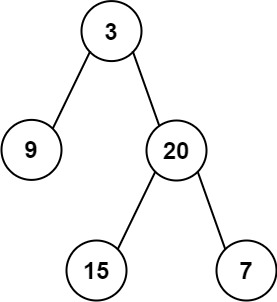106. Construct Binary Tree from Inorder and Postorder Traversal
Medium LeetCodeGiven two integer arrays inorder and postorder where inorder is the inorder traversal of a binary tree and postorder is the postorder traversal of the same tree, construct and return the binary tree.
Example 1
Input: inorder = [9,3,15,20,7], postorder = [9,15,7,20,3]
Output: [3,9,20,null,null,15,7]
Example 2
Input: inorder = [-1], postorder = [-1]
Output: [-1]
Constraints
- 1 <= inorder.length <= 3000
- postorder.length == inorder.length
- -3000 <= inorder[i], postorder[i] <= 3000
- inorder and postorder consist of unique values.
- Each value of postorder also appears in inorder.
- inorder is guaranteed to be the inorder traversal of the tree.
- postorder is guaranteed to be the postorder traversal of the tree.
How to solve the problem
Code
- Recursion (DFS)
Python
# Definition for a binary tree node.
# class TreeNode:
# def __init__(self, val=0, left=None, right=None):
# self.val = val
# self.left = left
# self.right = right
class Solution:
def buildTree(self, inorder: List[int], postorder: List[int]) -> Optional[TreeNode]:
if not inorder or not postorder:
return None
# The last element in postorder is the root of the current subtree
root_val = postorder.pop()
root = TreeNode(root_val)
# Find the index of the root in inorder to split left and right subtrees
index = inorder.index(root_val)
# Important: build right subtree first because we are popping from the end of postorder
root.right = self.buildTree(inorder[index + 1:], postorder)
root.left = self.buildTree(inorder[:index], postorder)
return rootComplexity
- Time complexity: O(n), n == number of nodes
- Space complexity: O(n)

Comments
No comments yet. Be the first to comment!